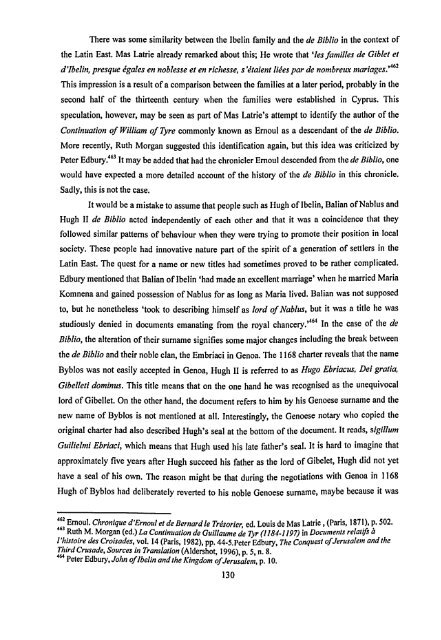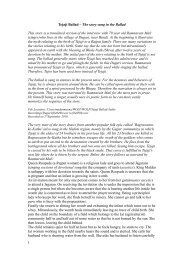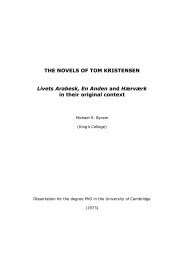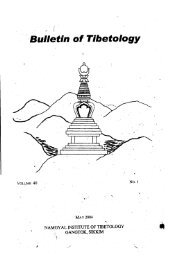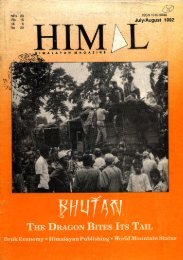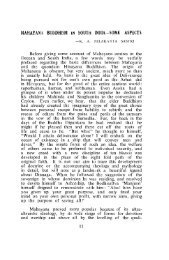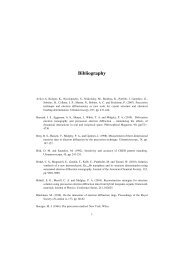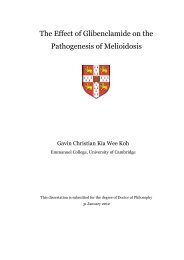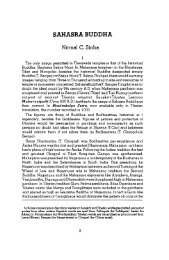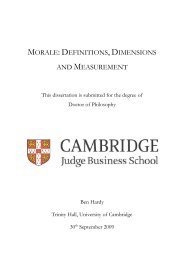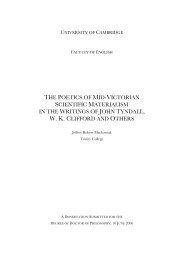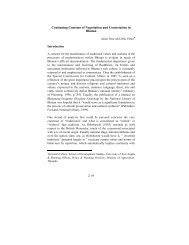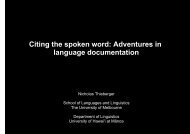The Crusades, the Genoese and the Latin East - DSpace at ...
The Crusades, the Genoese and the Latin East - DSpace at ...
The Crusades, the Genoese and the Latin East - DSpace at ...
Create successful ePaper yourself
Turn your PDF publications into a flip-book with our unique Google optimized e-Paper software.
<strong>The</strong>re was some similarity between <strong>the</strong> Ibelin family <strong>and</strong> <strong>the</strong> de Biblio in <strong>the</strong> context of<br />
<strong>the</strong> <strong>L<strong>at</strong>in</strong> <strong>East</strong>. Mas L<strong>at</strong>rie already remarked about this; He wrote th<strong>at</strong> `les families de Giblet et<br />
d'Ibelin, presque egales en noblesse et en richesse, s'etaient liees par de nombreux mariages. '462<br />
This impression is a result of a comparison between <strong>the</strong> families <strong>at</strong> a l<strong>at</strong>er period, probably in <strong>the</strong><br />
second half of <strong>the</strong> thirteenth century when <strong>the</strong> families were established in Cyprus. This<br />
specul<strong>at</strong>ion, however, may be seen as part of Mas L<strong>at</strong>rie's <strong>at</strong>tempt to identify <strong>the</strong> author of <strong>the</strong><br />
Continu<strong>at</strong>ion of William of Tyre commonly known as Ernoul as a descendant of <strong>the</strong> de Biblio.<br />
More recently, Ruth Morgan suggested this identific<strong>at</strong>ion again, but this idea was criticized by<br />
Peter Edbury. 463 It may be added th<strong>at</strong> had <strong>the</strong> chronicler Ernoul descended from <strong>the</strong> de Biblio, one<br />
would have expected a more detailed account of <strong>the</strong> history of <strong>the</strong> de Biblio in this chronicle.<br />
Sadly, this is not <strong>the</strong> case.<br />
It would be a mistake to assume th<strong>at</strong> people such as Hugh of Ibelin, Balian of Nablus <strong>and</strong><br />
Hugh II de Biblio acted independently of each o<strong>the</strong>r <strong>and</strong> th<strong>at</strong> it was a coincidence th<strong>at</strong> <strong>the</strong>y<br />
followed similar p<strong>at</strong>terns of behaviour when <strong>the</strong>y were trying to promote <strong>the</strong>ir position<br />
in local<br />
society. <strong>The</strong>se people had innov<strong>at</strong>ive n<strong>at</strong>ure part of <strong>the</strong> spirit of a gener<strong>at</strong>ion of settlers in <strong>the</strong><br />
<strong>L<strong>at</strong>in</strong> <strong>East</strong>. <strong>The</strong> quest for a name or new titles had sometimes proved to be ra<strong>the</strong>r complic<strong>at</strong>ed.<br />
Edbury mentioned th<strong>at</strong> Balian of Ibelin `had made an excellent marriage' when he married Maria<br />
Komnena <strong>and</strong> gained possession of Nablus for as long as Maria lived. Balian was not supposed<br />
to, but he none<strong>the</strong>less `took to describing himself as lord of Nablus, but it was a title he was<br />
studiously denied in documents eman<strong>at</strong>ing from <strong>the</strong> royal chancery. '464 In <strong>the</strong> case of <strong>the</strong> de<br />
Biblio, <strong>the</strong> alter<strong>at</strong>ion of <strong>the</strong>ir surname signifies some major changes including <strong>the</strong> break between<br />
<strong>the</strong> de Biblio <strong>and</strong> <strong>the</strong>ir noble clan, <strong>the</strong> Embriaci in Genoa. <strong>The</strong> 1168 charter reveals th<strong>at</strong> <strong>the</strong> name<br />
Byblos was not easily accepted in Genoa, Hugh II is referred to as Hugo Ebriacus, Dei gr<strong>at</strong>ia,<br />
Gibelleti dominus. This title means th<strong>at</strong> on <strong>the</strong> one h<strong>and</strong> he was recognised as <strong>the</strong> unequivocal<br />
lord of Gibellet. On <strong>the</strong> o<strong>the</strong>r h<strong>and</strong>, <strong>the</strong> document refers to him by his <strong>Genoese</strong> surname <strong>and</strong> <strong>the</strong><br />
new name of Byblos is not mentioned <strong>at</strong> all. Interestingly, <strong>the</strong> <strong>Genoese</strong> notary who copied <strong>the</strong><br />
original charter had also described Hugh's seal <strong>at</strong> <strong>the</strong> bottom of <strong>the</strong> document. It reads, sigillum<br />
Guilielmi Ebriaci, which means th<strong>at</strong> Hugh used his l<strong>at</strong>e fa<strong>the</strong>r's seal. It is hard to imagine th<strong>at</strong><br />
approxim<strong>at</strong>ely five years after Hugh succeed his fa<strong>the</strong>r as <strong>the</strong> lord of Gibelet, Hugh did not yet<br />
have a seal of his own. <strong>The</strong> reason might be th<strong>at</strong> during <strong>the</strong> negoti<strong>at</strong>ions with Genoa in 1168<br />
Hugh of Byblos had deliber<strong>at</strong>ely reverted to his noble <strong>Genoese</strong> surname, maybe because it was<br />
462<br />
Ernoul. Chronique d'Ernoul et de Bernard le Trdsorier, ed. Louis de Mas L<strong>at</strong>rie , (Paris, 1871), p. 502.<br />
463<br />
Ruth M. Morgan (ed. ) La Continu<strong>at</strong>ion de Guillaume de Tyr (1184-1197) in Documents rel<strong>at</strong>ifs ä<br />
1'histoire des Croisades, vol. 14 (Paris, 1982), pp. 44-5. Peter Edbury, <strong>The</strong> Conquest ofJerusalem <strong>and</strong> <strong>the</strong><br />
Third Crusade, Sources in Transl<strong>at</strong>ion (Aldershot, 1996), p. 5, n. 8.<br />
464<br />
Peter Edbury, John of 1belin <strong>and</strong> <strong>the</strong> Kingdom ofJerusalem, p. 10.<br />
130


